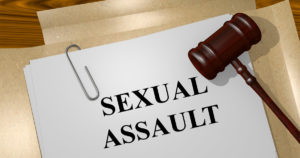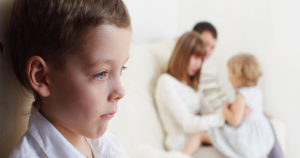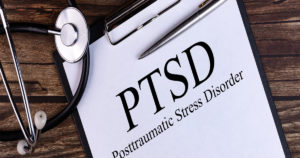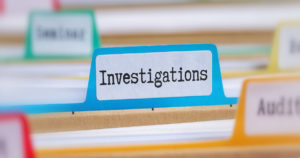Types of Child Abuse
 Child abuse and neglect comes in different forms, and the symptoms children exhibit can be obvious, unclear, or very subtle. According to the Centers for Disease Control and Prevention (CDC), one out of every seven children in the United States are abused or neglected every year. This number could be a lot higher since this mistreatment is not always reported. Even so, there are over three million incidents of child abuse reported each year.
Child abuse and neglect comes in different forms, and the symptoms children exhibit can be obvious, unclear, or very subtle. According to the Centers for Disease Control and Prevention (CDC), one out of every seven children in the United States are abused or neglected every year. This number could be a lot higher since this mistreatment is not always reported. Even so, there are over three million incidents of child abuse reported each year.
Child abuse is when a parent or caregiver causes an injury to a child or a risk of serious harm, emotional harm, or death. It can happen through the parent or caregiver’s direct actions or because of a failure to act. Physical abuse, sexual abuse, emotional abuse, and neglect are four basic categories of child abuse. There are many subcategories within each. Oftentimes, the abuser is an adult male or a teenager who has reached puberty. These abusers may have experienced similar abuse when they were younger, so the vicious cycle continues.
What are the Signs of Physical Abuse?
Physical abuse is considered to be non-accidental physical injuries. Obvious signs may include broken bones, burns, bruises, burn marks, and dried blood. Physically abused children can also act in ways that reveal that they are being abused. An abused child may do the following:
- Wear long sleeves, pants, or turtlenecks when it is hot out in order to hide bruises.
- Flinch when touched.
- Create hard-to-believe stories about their injuries.
- Strongly protest when it is time to go home.
- Act frightened of certain people.
- Draw pictures of their caregivers abusing them, but they may not be willing to share the pictures.
- Act out their abuse while they are playing.
Physical abuse takes many forms besides hitting, burning, slapping, and pinching. Abused children can suffer physical harm at the hands of their parents or caregivers by being tied down, thrown, shaken, poisoned, or being forced to do something painful. Withholding food, medication, or sleep are also considered to be forms of physical abuse.
Is Sexual Abuse Different from Physical Abuse?
The two forms of abuse can overlap, but sexual abuse is when an act entices or forces the child to take part in sexual activities. Even if the victim does not comprehend what is going on and it is not forced or violent, it is still sexual abuse. Physical contact does not have to occur. Child sexual abuse is usually perpetrated by someone that the child knows, and the child may be threated and told to keep it a secret.
Sexually abused children may have difficulty sleeping and be withdrawn from family and friends. On the other hand, they could be more vocal and discuss the abuse, or they can exhibit sexual behaviors. A sexually abused child may also express knowledge that is unusual, bizarre, or beyond what is appropriate for their age. Other symptoms include:
- Bed wetting
- Mood swings
- Loss of appetite
- Pregnancy
- Running away from home
What About Emotional Abuse?
Emotional abuse can be just as damaging as physical and sexual abuse. According to the CDC, it is when a parent or caregiver acts in ways that harms a child’s emotional well-being or self-worth. This can include yelling, name calling, withholding love, rejection, and threatening remarks. Other signs include children who are threatened, bullied, and mocked, and children who are emotionally blackmailed and who are unable to express their opinions.
If the behaviors in question are not persistent and recurring, though, it may not qualify as actual abuse. Parents and caregivers may say unkind things or act poorly when they are upset, but this is not necessarily emotional abuse if it only happens once. When real emotional abuse is ongoing, the young victims can be overly compliant, aggressive, anxious, fearful, and withdrawn. They may also revert to age-inappropriate behaviors.
Child Neglect
Neglect is when a child’s basic physical and emotional needs are not being met. This is shown through a continual lack of access to food, shelter, clothing, hygiene, medical care, or education. Abusers may do the following:
- Lock children in closets.
- Leave children at home for extended periods of time without supervision.

- Put children in dangerous situations.
- Fail to give children enough food or necessities.
- Fail to take care of the children’s medical needs.
Neglected children may be seen wearing torn or dirty clothes, miss school often, wear the same clothes all the time, or appear unwashed or undernourished. They may also exhibit some of the same symptoms of children who fall into the other three abuse categories, such as being withdrawn, feeling anxious or fearful, acting inappropriately, or lacking attachment to other people. If a neglected child has an untreated physical or mental illness, it could escalate into long-term, serious health issues.
How can I Tell if an Adult is a Child Abuser?
Parents and caregivers who abuse children may also act in certain ways that may indicate that something is going on. They may be very secretive and hesitant to speak or socialize with other parents and caregivers. Also, they may be unusually protective of their children and not allow them to spend time with other children or family members. Other possible signs of abuse include:
- Emotionally abusing the child in public.
- Frequently complaining about the child to others.
- Talking inappropriately about marital problems, sexual relations, and power struggles.
- Purposefully avoiding interactions with teachers and other school staff members.
What are the Consequences of Child Abuse?
 In addition to physical injuries, abused children can develop significant emotional and psychological problems. Their social-emotional skills could suffer irreparable damage, and they could end up inflicting similar forms of abuse to others. The CDC points out that being exposed to violence as a child increases the risk of the following:
In addition to physical injuries, abused children can develop significant emotional and psychological problems. Their social-emotional skills could suffer irreparable damage, and they could end up inflicting similar forms of abuse to others. The CDC points out that being exposed to violence as a child increases the risk of the following:
- Injury
- Future violence victimization and perpetration
- Substance abuse
- Sexually transmitted infections
- Delayed brain development
- Limited employment opportunities
Over 28 percent of adults report that they were physically abused when they were children. Chronic abuse, when it is untreated, can impact an individual’s chances for lifelong health and wellness. It can lead to toxic stress, a condition that changes how the brain develops. This increases the risk for post-traumatic stress disorder (PTSD) and can also affect attention, memory, and learning.
What if I Suspect Child Abuse?
 Anyone who believes that a child is being abused or neglected should step up and take action. It is not necessary to know what type of abuse is going on, and reporting it can get the child to safety or even save their life. Understanding and recognizing the signs of abuse and neglect is the first step towards protecting a victimized child.
Anyone who believes that a child is being abused or neglected should step up and take action. It is not necessary to know what type of abuse is going on, and reporting it can get the child to safety or even save their life. Understanding and recognizing the signs of abuse and neglect is the first step towards protecting a victimized child.
The National Child Abuse Hotline is a 24-hour resource that can help with every type of child abuse situation, and all calls are kept confidential. Prevent Child Abuse America is another agency that advocates for abused children, and they have a newsletter that provides helpful information. In New Jersey, the Division of Children Protection and Permanency (DCPP) offers child welfare surfaces to those who need them.
What if I am Being Accused?
If a parent or caregiver is being accused of child abuse or neglect, it is important that they know their rights as well. Contacting a knowledgeable lawyer after a child abuse allegation is crucial. A lawyer will evaluate the investigations of the DCPP and determine the best course of action.
South Jersey DCPP Lawyers at the Law Offices of Theodore J. Baker Protect Clients Accused of Child Abuse and Neglect
If you are being accused of child abuse or neglect, you may be unsure about the proper course of action. Speak to one of our South Jersey DCPP lawyers at the Law Offices of Theodore J. Baker for help with your case. Call us at 856-795-9400 or complete our online form for an initial consultation. Located in Cherry Hill, New Jersey, we serve clients throughout South Jersey, including Haddonfield, Marlton, Medford, Moorestown, Mount Laurel, and Voorhees.










